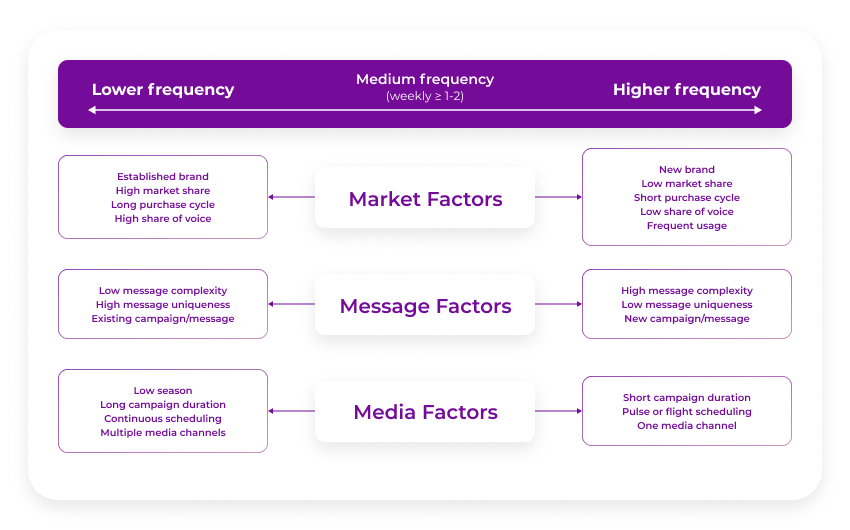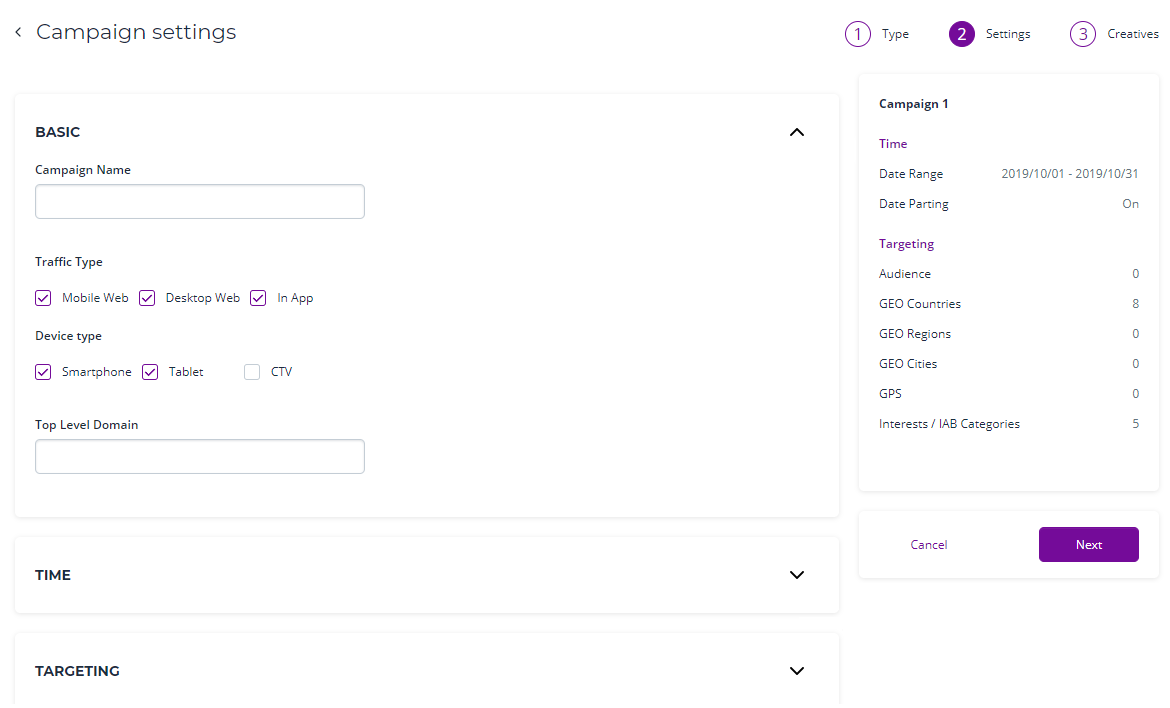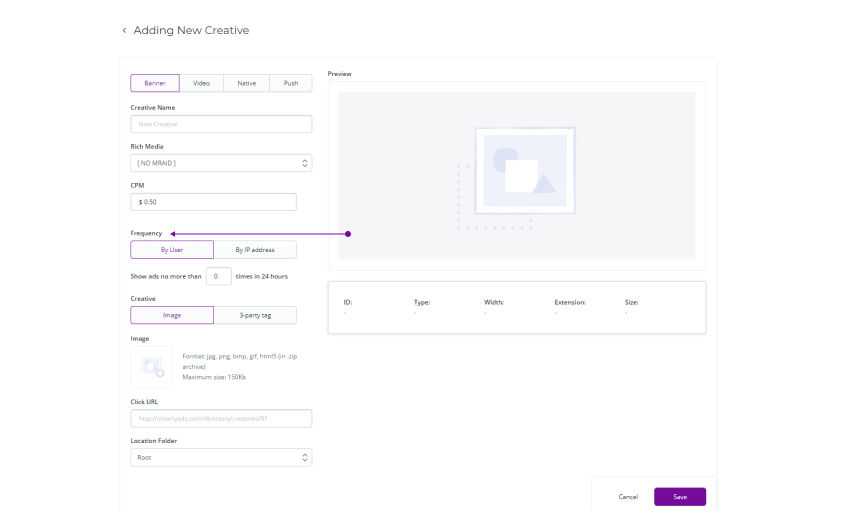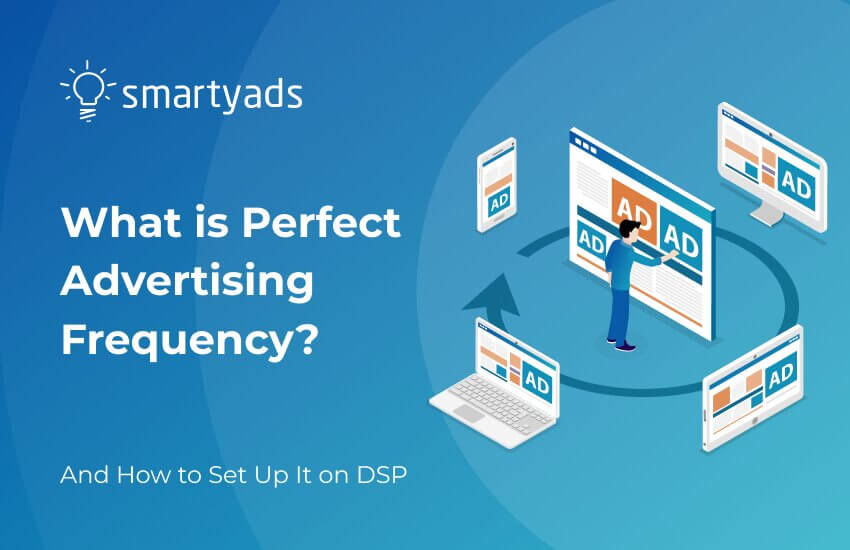Every advertiser knows there are numerous factors that define the success of your programmatic marketing efforts. Some of them are precise and predictable, while others can remain a mystery even for the most experienced marketers. Among these, advertising frequency can often be overlooked, but in fact, it is often a key option for any DSP regardless of the campaign’s goals. In this post, we are going to discuss what are the benefits of setting an effective frequency capping and how to use it on your DSP. Let’s start with the advertising frequency definition:
What is frequency capping?
For advertising campaigns, frequency capping defines how many times the same consumer will be exposed to an advertising within a certain period. Advertisers from all over the world are trying to solve the mystery - which number makes the most effect per day and per week, so that the brand message becomes recognizable and yet not too annoying. Opinions on this subject vary, but what can be said with certainty is that effective frequency advertising brings numerous benefits for any industry.
Setting an effective advertising frequency can help you to…
- Reach new audience effectively
Getting new clients doesn’t usually work without getting a number of people to know about your brand first. Lots of factors define whether or not they will move further through the purchasing cycle, such as how well you know your target audience persona or how engaging your message is. But apart from this, there is a strong connection between reach and frequency in advertising.
On the stage of building brand awareness, every detail is especially important because the first impression often determines whether or not the user will eventually buy the product. It is likely that users who see ads just once simply won’t even notice them. At the same time, it will serve you no good if users get bombarded with your ads every day - they can get really annoyed and you don’t want irritation to be the first association with your brand.
Setting an optimal frequency can help you find this balance as it allows you to set how often a specific ad will be shown to a particular user. This ensures that your advertising campaign is precise not only in terms of your target audience and the way you communicate with them.
- Establish brand consistency
To make your brand recognizable among your potential customers, all of your creatives should have a similar vibe. The core of this consistency is repetition - successful advertising for your brand should include the same logo, slogan, or jingle for different creatives or even campaigns. Having established distinct elements can significantly increase customer loyalty to your brand.
But all these elements will only become noticeable if your campaign has a precise advertising reach and frequency. Your logo or tagline should be consistently encountered without being too annoying, and this is basically how frequency works for ad campaigns. Combined with variations of the same message and recognizable elements, setting an effective ad frequency will make your brand advertising campaigns bound for success.
- Protect users from irritating ads
Sometimes it happens that the prospect can get your ad too often per day which can lead to ad fatigue. And if their first memory about your brand is an annoying ad, it is unlikely that such users will then turn to your offers.
One solution to this problem may be broadening your audience - this way an ad will be shown to more people and each of them will see it an optimal number of times. For example, if your budget is 1000$ and your audience is 100 people, broadening your audience targeting to 200 will result in showing your ad in front of more people for the same money.
There is, however, a simpler way. With the right advertising frequency, you can avoid ad fatigue by setting a limit on how many times the same user will get your message. This way there is no need to broaden your audience or include any other changes to your campaign. For the same budget of 1000$ and an audience of 100 people, not only you can still have a limited frequency advertising, but also a longer duration of your campaign.
- Save money
As we have already mentioned, not having a frequency cap can lead to significant adverse effects on your campaign’s performance, but how is it linked to your advertising campaign budget? Let’s have a closer look at the possible improvements to your campaign’s cost-efficiency with frequency cap.
Once every member of your audience receives your message for the first time, without a frequency cap they are going to get it over and over again up until all your budget is spent. But when you limit this number, it ensures that your audience gets a precise number of ads within a precise time period and there is no need to waste your money on irritation. Instead, you can either prolong the campaign or free up some resources for other marketing needs.
How to use frequency in advertising via the DSP?
As we can see, setting up a frequency cap can give you lots of benefits both in terms of advertising effectiveness and cost-efficiency. It is now time to get to know how to use it in practice.
Finding your magic number
What is your optimal frequency cap? Some claim that encountering an ad 3 times builds enough brand recognition without potential irritation. Others insist that the “Rule of 7” is the key, meaning that consumers need to see an ad 7 times to convert. There are also opinions that even 10 times won’t be enough. In general, the average number of times recommended for a particular ad to be shown ranges from 3 to 7, but we suggest to make your own research and find your magic number by answering a couple of questions:
- Is your brand well established? The more people already know about it, the higher the possibility it will need less exposure to get a response.
- What is the goal of your campaign? Each goal demands a different frequency. For example, it is considered that brand awareness campaigns need less exposure compared to changing consumer opinions.
- What is your market? Depending on the situation you may need to run more ads in order to perform better than competitors. It is also important that the more expensive is your offer, the more time users may need to come up with the decision.
- How well do you know your potential customers? Different people need different approaches, as what is enough for one group of people may well be considered too much for the others.
When it comes to daily frequency, our recommendation is to use 1/24 frequency cap for CPC campaigns and 3/24 for CPM. If you are using videos or interactive ads, opt for 1/24 to avoid ad fatigue as these types may appear more invasive.
You can also use the following graph to help you navigate this question considering all these factors. Remember that even for the different campaigns of the same brand there might be a different winning frequency cap, so it’s always best to make good research and A/B test before launching a particular campaign.

Setting up on DSP
Setting up a frequency cap on a DSP is no sweat even for a nocive. In order to do this:
- Start with signing up on a demand-side platform that allows using this option.
- Once you’ve signed up, create your first campaign at the “Campaigns” section. You can then choose a type of campaign as well as basic campaign settings, including a wide range of targeting solutions.

- After that, you can start adding creatives and setting campaign controls, among which - frequency capping. You can set frequency ranges either by users or by IP addresses. Then choose the highest number of times you want to display your ad within 24 hours and do the same for the rest if you have multiple creative.

- And there you have it! Your frequency cap is all set up and all you have to do now is to start your campaign and enjoy the results.




